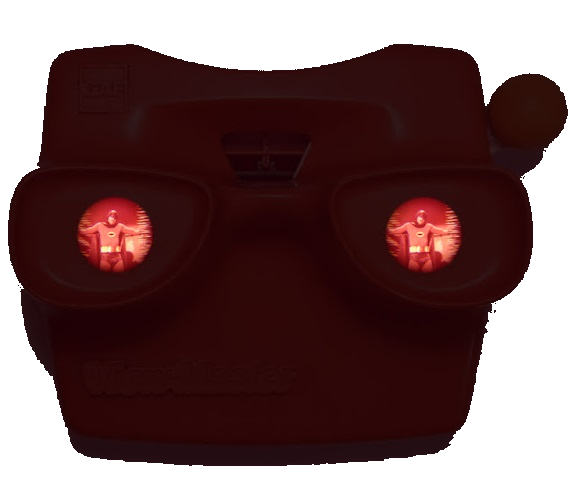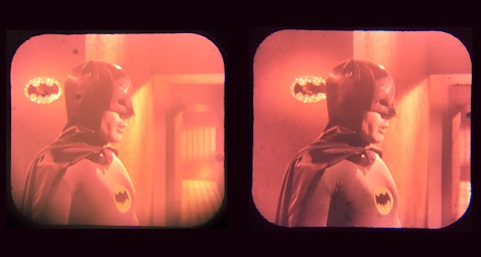If you've used a View-Master Viewer
(they're still around), you know how it works. You
look into the viewer with both eyes. Each "slide" is
really two images, two versions of the photo, illuminated
from behind. The image that each eye sees is slightly
offset from the other, which gives you the illusion of a
single image in 3-D. This utilizes an old technology
called stereoscopic imaging or stereoscopy.
While normally you need equipment to provide the focal
point (such as the View-Master Viewer) for the images, it
is possible to emulate the experience without anything
other than your two eyes. Using the image below, you
can approximate the vintage View-Master experience.
Look at the slides, trying not to concentrate on either
one in particular. Relax your eyes. Then slowly
cross your eyes. It may take a while, but you will
notice that the two images move toward each other, and
then merge to create a third image in the middle.
This third image will appear to be in 3-D. This is
close to what you'd see viewing these photos in a
View-Master Viewer.
|

